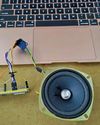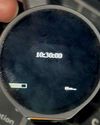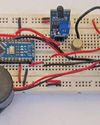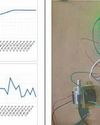
Dr Gokhale, can you explain the difference between low-speed eV batteries and high-speed, highvoltage eV batteries, perhaps with an example?
Typically, low-voltage batteries are defined as those up to 48 volts, while high-voltage batteries exceed this threshold. This distinction is fundamental in electrical engineering studies. The critical difference lies in the electron transport between the anode and cathode during energy generation, which can be stored in various forms, such as batteries or supercapacitors.
Are most vehicles in india equipped with low- or high-voltage systems?
Most vehicles in India, particularly two-wheelers and three-wheeler autos, use low-voltage systems around 48 volts. Brands like Ola, Ampere, Bgauss, and Bajaj predominantly use these low-voltage batteries.
Which type of battery do you consider safer for electric vehicles?
Both types have their risks if not handled properly. Safety largely depends on the quality of the battery management system (BMS), which is crucial for preventing issues like thermal propagation that can lead to fires. In India, regulatory measures like AIS 156 for materials traceability and AIS 038 for vehicles have been introduced to enhance safety by ensuring that thermal propagation in batteries is contained.
Are the components used in lowvoltage and high-voltage EV batteries the same, or are there significant differences?
There are significant differences, particularly in the wiring harnesses, fuses, and connectors, which must handle higher voltages, such as 350, 650, or 800 volts. Low-voltage components cannot be used for high-voltage applications due to their lower current-carrying capacity, which makes them susceptible to damage during operation.
This story is from the {{IssueName}} edition of {{MagazineName}}.
Start your 7-day Magzter GOLD free trial to access thousands of curated premium stories, and 9,000+ magazines and newspapers.
Already a subscriber ? Sign In
This story is from the {{IssueName}} edition of {{MagazineName}}.
Start your 7-day Magzter GOLD free trial to access thousands of curated premium stories, and 9,000+ magazines and newspapers.
Already a subscriber? Sign In

STK435 IC-Based STEREO AMPLIFIER
This stereo AF amplifier uses the STK435 IC, a highly popular choice due to its simplicity.

A SEWER DRAIN SHIELD For Smart Cities
Drainage systems are vital for storm water management but often transport pollutants, especially plastics, to rivers and oceans, harming ecosystems.

ESP32 SPEECH FUNCTION: Text To Speech
Speech capability in technology primarily has two dimensions: text to speech (TTS) and speech to text (STT). This device focuses on TTS.

World's Smallest Programable INDUSPHONE DESIGN
This is the second part of designing the world’s smallest phone, where the UI is integrated with the basic functions of the phone.

FLAME-SENSING FIRE ALARM Using An Arduino Nano
Fire safety alarms are crucial in both residential and industrial environments.

loT-Based Distribution Transformer CONDITION MONITORING SYSTEM
The proposed IoT-based distribution transformer condition monitoring system enables real-time monitoring of distribution transformers, identifying such deviations as overload conditions and overheating.

Wi-Fi 6 AND Wi-Fi 7 Powering The Next Wave of Smart Connectivity
Wi-Fi 6 leads with faster data rates and reduced latency while upcoming Wi-Fi 7's backward compatibility will facilitate gradual upgrades from Wi-Fi 6, easing transitions. However, advanced features like multi-link operation (MLO) and ultra-low latency may command a premium, making Wi-Fi 7 suited for high-end applications.

CHARGE FORWARD: High-Voltage Batteries And MSMEs Can Fuel INDIA'S EV REVOLUTION
A nuanced explanation of low- and high-voltage EV batteries by Dr Gokhale, Vice President for Battery Technology at JSW Energy, illuminates their advancements and influence. The essential role of MSMEs and academia in developing a strong EV ecosystem emerges, marking their significance for India's push towards self-reliance in this innovative field.

"MILES TO GO Before I Sleep"
A teacher illuminates the path to success through the light of knowledge, yet some teachers extend that light to society through their contributions and research. Known as the architect of the modern M3 electronic voting machine (EVM) and the voter verifiable paper audit trail (VVPAT) that transformed India's democratic process, Prof. (Dr) Rajat Moona's journey began in the modest town of Bareilly. Here is his story, as recounted to and written by EFY's Yashasvini Razdan.

STARTUPS & INNOVATORS
1 One Charger To Charge All Your Devices | 2 Harnessing AI Technology For Efficient Pest Management | 3 Wireless Light-Based Communication With Velmenni's Technology